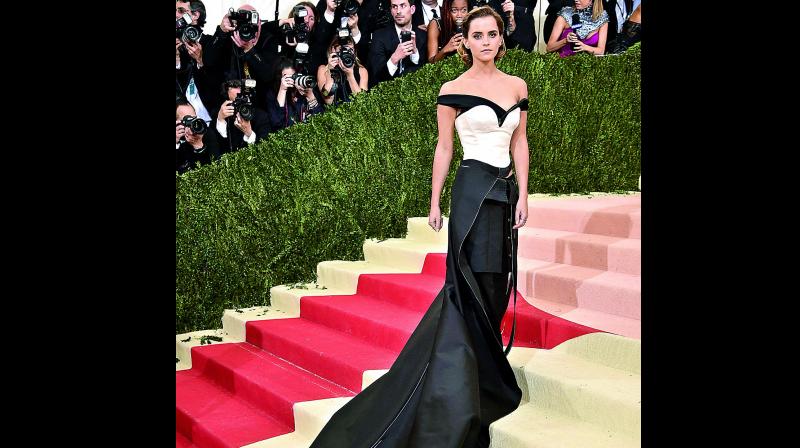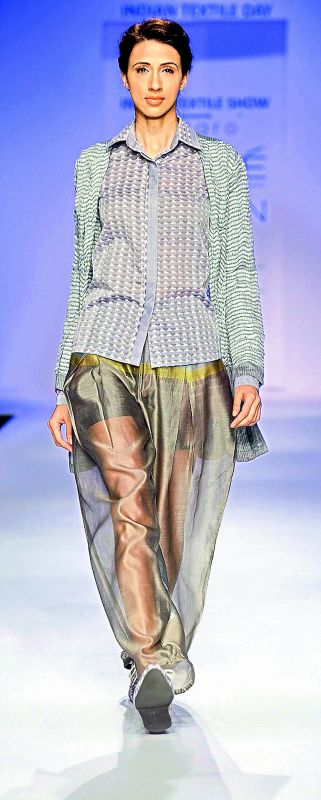On the runway to sustainability

The popularity of fast fashion has proved to be disastrous for the Earth. It contributes to 10 per cent of carbon footprint thanks to the use of synthetic fibres, pesticides and water wastage. Due to the heavy price of fast fashion, designer brands are now consciously making an effort to promote sustainable methods for creating products that are guilt-free and absolutely eco-friendly.
Designer Gaurav Jai Gupta of Akaaro says, “Sustainable fashion is not just about wearing organic fabrics and accessories; it is an overall process of creating a product that uses eco-friendly ways with zero-wastage, minimum water waste and completely hand-done from yarn to outfit stage. We have been using specially engineered wool and yarns to create outfits that can be worn for several seasons. As a brand, we believe in upcycling everything and that’s an ideology that will benefit the fashion business in the long term.”
To revive the practice of using dyes derived from natural substances such as turmeric, pomegranate, and indigo to colour silk yarn, Niranjana Viswanathan, Director, RmKV Silks, has been working with over 10,000 weavers to create garments that are long-lasting. Niranjana says, “As a brand, we are antithetical to fast fashion: we emphasise artisanal processes over industrial ones and work with over 10,000 weavers from across the country. We have provided them with the Modern Pneumatic Handloom or MPHL, — that eliminates the physical strain of weaving while preserving the skill of the weave.”
 Model in a Gaurav Jai Gupta creation.
Model in a Gaurav Jai Gupta creation.
According to designer Mahima Gujral of Sue Mui, vegan leather, plant-based and wood-based material such as tencel, organic fibres, and hemp innovations are definitely the next big thing in fashion. She says, “We work with hemp on a regular basis and it is one of our star fabrics. We also pay attention to upcycling post-production waste Instead of throwing the scraps, we create accessories and other display material out of it.”
Turns out that the introduction of vegan leather in fashion was a big boost for the proponents of sustainability, as the market size of this product according to the Grand View Research Survey is projected to reach $85 billion by the year 2025. Designer Poonam Dubey who works extensively with Jharcraft, Development Commission of Handicraft to promote cruelty-free fashion, says “It’s important to make cruelty-free options in fashion and promote vegan fashion because that directly affects animals. It makes no sense to harm innocent animals to dress. We do our part by aggressively promoting organic fashion and using vegan leather and silk in our creations.”
Not just offline, but online brands like The Kaithari Project, Kharakapas and Metaphorracha that work with the Etsy Network encourage dialogues on sustainable choices. But sustainable fashion has a long way to go and supporting it could be a costly affair for the makers.
Saloni Sakaria, founder, The Third Floor Clothing, mentions, “We are aware of our entire supply chain, and look after the people involved in it. But eco-friendly material are not commercial material. They are produced on order and usually takes a while to procure. Whether they are eco-friendly yarns, dyes, fabrics; their processes take longer and thus end up being more expensive than off-the-shelf material. When using eco-friendly material, you end up being involved with the makers of the material directly, giving fair wages for the same. This increases the value of the products.”
Designer Kunal Anil Tanna adds his two cents, “Sustainable fashion tends to be more expensive than clothing produced by conventional methods. This is because of the efforts that go into minimising environmental impact when growing material, manufacturing, packaging, and shipping it. But, it’s the right way.”

